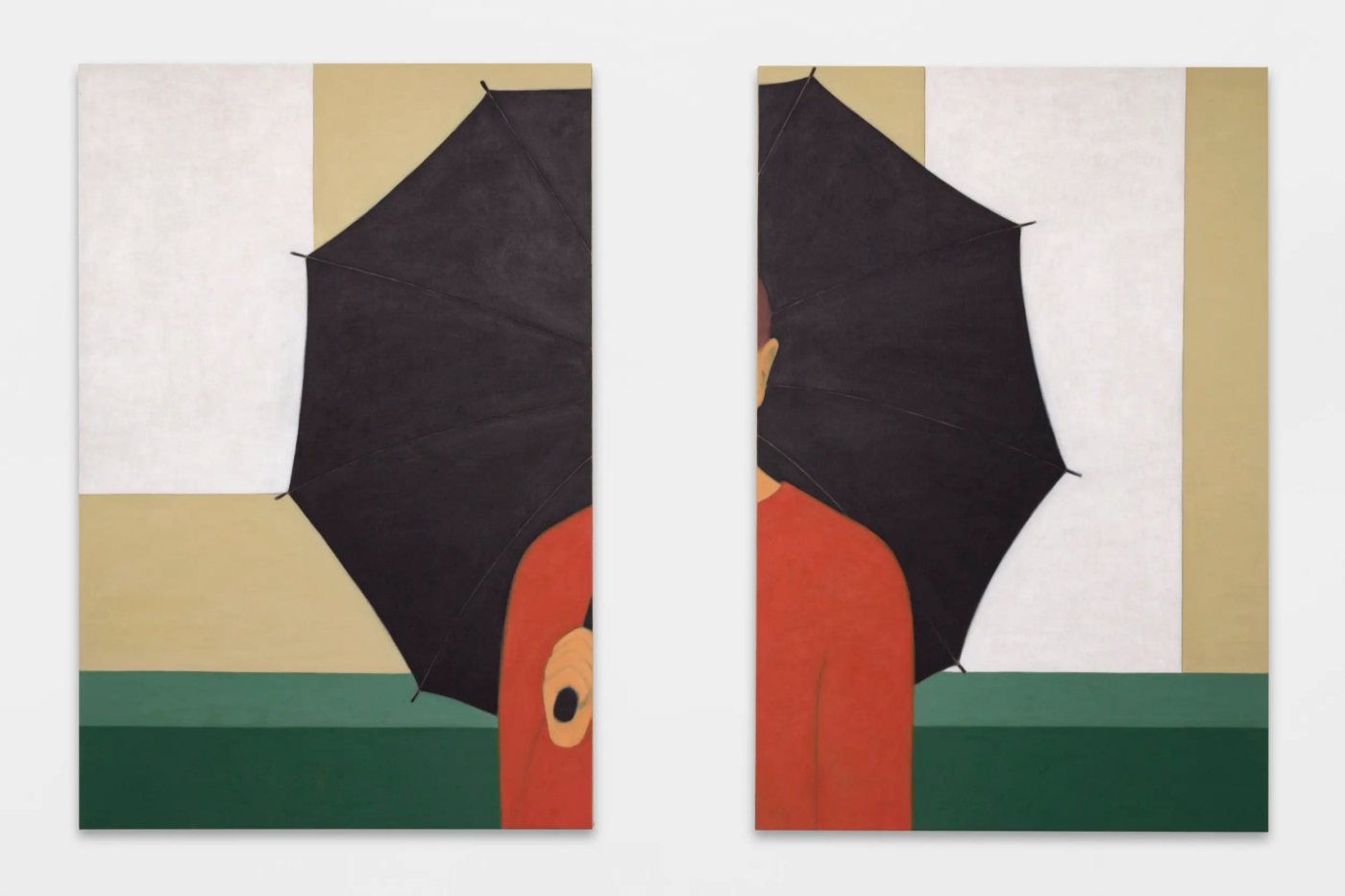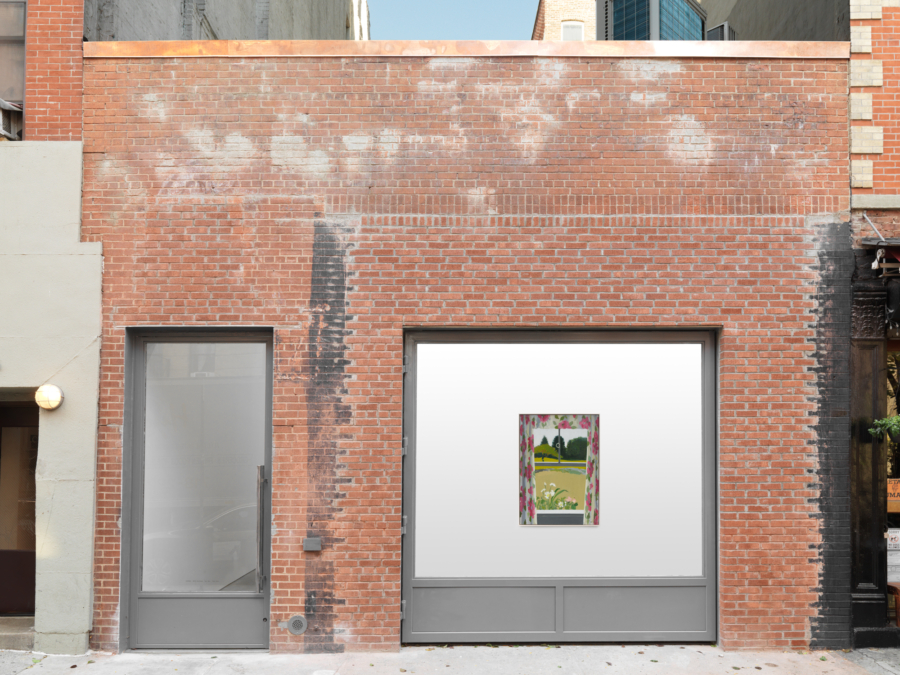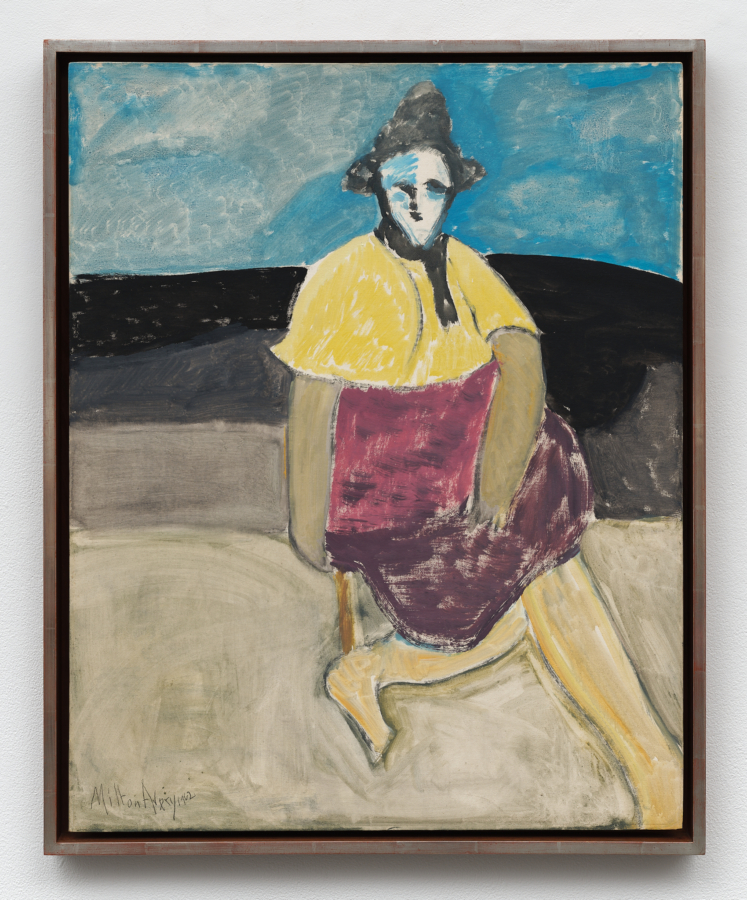
December 11, 2024
Stop Making Sense serves as both title and reproach. The exhibition presents sixteen of Henni Alftan’s recent paintings, each irresistibly imbued with a narrative potential that threatens to leap from work to work and unite the images scattered across the walls of Karma into one cohesive throughline: A cigarette burns in an ashtray. The television glows in the living room. A woman sits, legs crossed, her knees purpled with bruises as the water in the bathtub overflows. The specifics of Alftan’s imagery produce a film noir tension that is steadied only by the artist’s impeccable use of color and fidelity to the uncanny properties of light and shadow. Enticing in subject matter, the work suggests but never insists fragments of narrative while continuously asserting its objecthood.
In the diptych Black Umbrella (In-between) (2023), a woman in red holds a black umbrella over her shoulder. Hung some twelve or so inches apart, the separate panels show everything but the very center of the image, the segment that holds its subject—the woman’s face—lost or destroyed. It is up to the viewer to imagine what is missing, or to piece it together in the ponderance of the low green wall that may be a hedge, the beige exterior of a house or building, and the blocks of white indicating a window and maybe a door immediately behind the woman. Background objects are now proffered for full consideration, as are the woman’s hand, ear, and a triangle of neck, details that would have been eclipsed by the countenance of what is instead a headless body. Indeed, the radical severing of the image foregrounds the primacy of looking at the physicality of the work itself, painted panels on a wall in a gallery, as narrative assumptions are left incomplete.
In Firework (2024), an orange star shatters in the center of a black sky as sparks of flame ripple outward in concentric circles from its core. Resting beneath a grid of gray lines that suggest a window, the star becomes a firework, its shock of light casting a shadow across a small, round table in the foreground. The orange paint is made brighter by the blackness that surrounds it, but the spectacle is muted by the cool and somber tones of the window frame, the plum-colored tabletop, and a glimpse of subdued teal walls. Stepping close to the work, I detect Alftan’s delicate build-up of impasto forming the mullions, which are edged in pink. The picture illustrates a fleeting moment, but the sturdiness of architectural elements, specifically the grid of the window, evoke a permanence. Similarly, Arched Window (2023) employs the emanation of light through a portal—in this case, golden sunshine—to motivate, as if by story, the juxtaposition of angular blocks of taupe, olive, and beige that create depth within a space defined by aubergine and teal. The shape of the window calls to mind Giorgio De Chirico’s Mystery and Melancholy of a Street (1914), but it is what goes on in the meeting of color blocks that invoke the writings of Josef Albers and more theoretical considerations of how hue and tone create space, depth, and a sense of place.
The Bay (Day) (2023), features a strip of blue sky hanging over a diagonal of teal water and ochre sand. There is a perfectness to the picture, an artificial stillness to the landscape that is only interrupted by a silver wiggle of foam lighting the water’s edge that seems to hold the viewer at arm’s length. Unsure of what to make of it, I turn away and see The Studio III (2024), the painting’s counterpoint, hanging across the room. In the latter painting, a corner of The Bay (Day) appears in the left side of the picture while on the right, the edge of Arched Window can be seen. No longer signifying a window-on-the-world, they become facsimiles, paintings-within-paintings, and in the process, reveal that they share the same color palette. The shadow of the artist hovers over both, hair tied back, paintbrush in hand. By literally bridging the two works, Alftan reveals that the continuity we are searching for is here; the artist hovers in even the most enchanting of pictures, and that ultimately it is she who controls the narrative and, in this juxtaposition of images, finally satisfies my need for a through-line.



